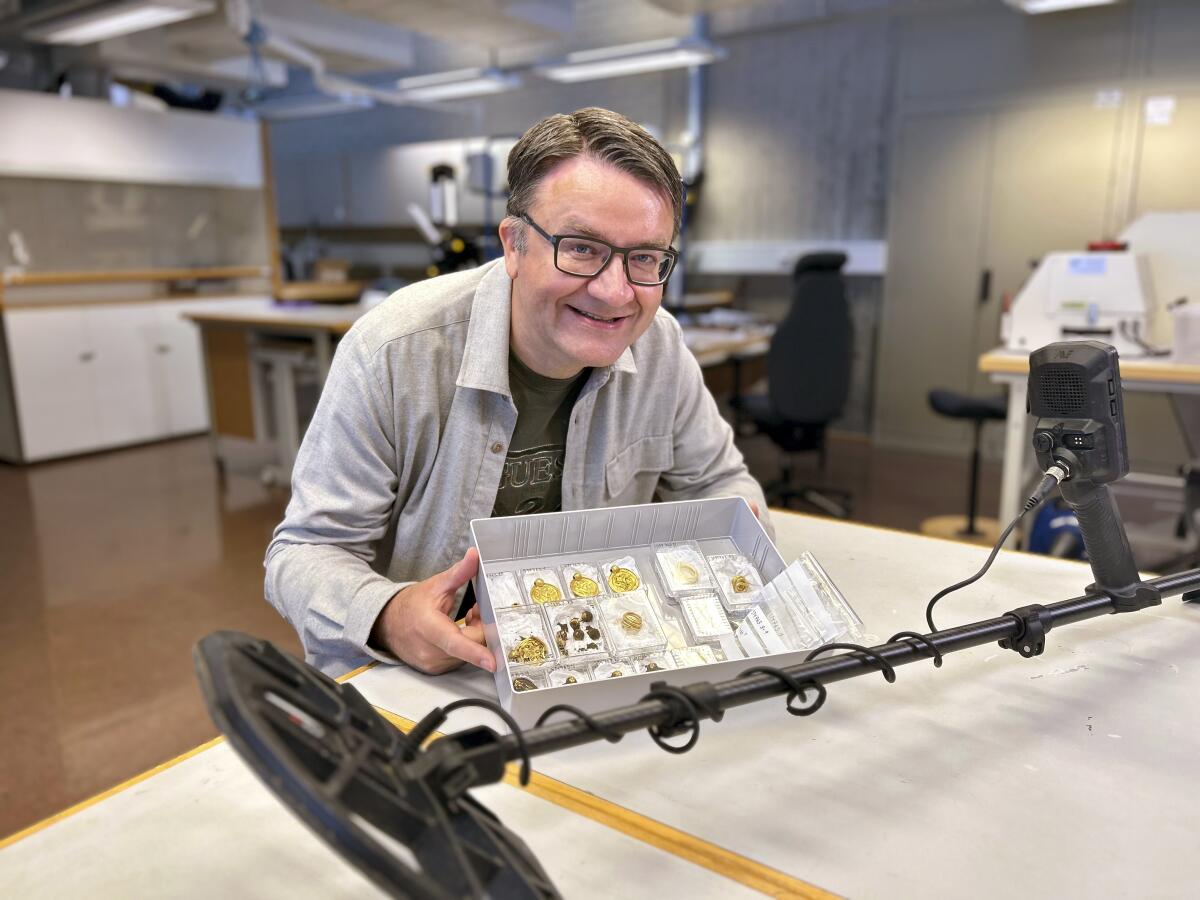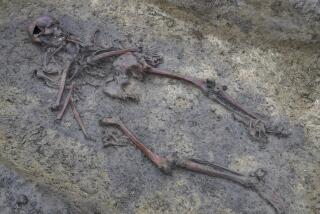Pendants, rings, gold pearls: Norwegian archaeologists say it’s the ‘gold find of the century’

- Share via
COPENHAGEN — At first, the Norwegian man thought his metal detector had reacted to chocolate money buried in the soil. It turned out to be nine pendants, three rings and 10 gold pearls in what was described as the country’s “gold find of the century.”
The rare discovery was made this summer by 51-year-old Erlend Bore on the southern island of Rennesoey, near the city of Stavanger. Bore had bought his first metal detector earlier this year to have a hobby after his doctor ordered him to get out instead of sitting on the couch.
Ole Madsen, director at the Archaeological Museum at the University of Stavanger, said that to find “so much gold at the same time is extremely unusual. This is the gold find of the century in Norway.”
A hand-drawn map with a red ‘X’ purportedly showing the location of a buried stash of jewelry looted by the Nazis has sparked a treasure hunt.
In August, Bore began walking around the mountainous island with his metal detector. A statement issued by the university said he first found some scrap but later uncovered something that was “completely unreal” — the treasure weighing a little more than 3.5 ounces.
Under Norwegian law, objects from before 1537, and coins older than 1650, are considered state property and must be handed in.
Hakon Reiersen, an associate professor with the museum, said the gold pendants — flat, thin medals called bracteates — date from around AD 500, the so-called Migration Period in Norway, which runs between 400 and about 550, when there were widespread migrations in Europe.
The pendants and gold pearls were part of “a very showy necklace” that had been made by skilled jewelers and was worn by society’s most powerful, said Reiersen. He added that “in Norway, no similar discovery has been made since the 19th century, and it is also a very unusual discovery in a Scandinavian context.”
The discovery of a rare Byzantine-era mosaic has highlighted the need for better protection of Gaza’s antiquities.
An expert on such pendants, professor Sigmund Oehrl with the same museum, said that about 1,000 golden bracteates have been found in Norway, Sweden and Denmark.
He said symbols on the pendants usually show the Norse god Odin healing the sick horse of his son. On the Rennesoey ones, the horse’s tongue hangs out on the gold pendants, and “its slumped posture and twisted legs show that it is injured,” Oehrl said.
“The horse symbol represented illness and distress, but at the same time hope for healing and new life,” he added.
The plan is to exhibit the find at the Archaeological Museum in Stavanger, about 200 miles southwest of Oslo.
More to Read
Sign up for Essential California
The most important California stories and recommendations in your inbox every morning.
You may occasionally receive promotional content from the Los Angeles Times.















